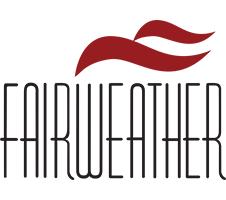Medical Plans Available

Fairweather offers medical plans through the Federal Employee Health Benefits (FEHB) program for tribal employees. Employees at Fairweather can buy the same health insurance offered to U.S. federal government employees. The FEHB plans
give you and your family choices so you can choose the plan that works best for healthcare needs.
OPEN ENROLLMENT
Open enrollment begins November 13, 2023, and concludes December 11, 2023. Enrollment for all benefits is available through PlanSource.
During open enrollment, you can add or change dependents, and enroll (or decline coverage) for the following benefits:
- Medical plans through FEHB
- Dental and vision coverage
- Health care flexible spending account
- Dependent care flexible spending account
- Voluntary employee life insurance
- Voluntary spouse life insurance
- Voluntary child life insurance
- Voluntary critical illness
- Hospital indemnity and accident insurance
new Employees
You can add or change dependents and enroll (or decline) for the following benefits during your initial enrollment period and annual open enrollment period:
• FEHB Medical Plan
• Dental and Vision Coverage
• Health and Dependent Care Flexible Spending Accounts
• Voluntary Life Insurance for Self, Spouse, and Child
• Basic Life Insurance
• Voluntary Critical Illness
• Hospital Indemnity and Accident Insurance
You must re-enroll in your flexible spending accounts each year.
Choosing a plan
Every family’s needs are different. Choose a plan that matches the way you use medical services. For example, if you have a lot of doctor visits, you may want a plan with lower out-of-pocket expenses. Or, if you have a prescription drug you take every day, choose a plan that covers those drugs at the lowest cost.
Decide who to cover
The FEHB plans are available for:
- Employee only
- Employee + 1
- Employee + family
Look at provider networks
Your costs are lower when you use providers who are part of the plan; these are “in-network” providers. If you have doctors or other health care providers that you like, call their office to see if they are in-network for the plans you are considering. This means that they have an agreement with that plan’s insurance company to provide service to you at a lower price.
In general, plans with a bigger network of healthcare providers will give you more choices. If you use providers that are not in your plan’s network, you may pay much more.
Some of the FEHB plan providers use the same networks as Aetna and Cigna:
- APWU – 471 plan uses Cigna/ 474 plan uses United Healthcare
- GEHA – uses United Healthcare’s network
- MHBP – uses Aetna’s network
- NALC – uses Cigna’s network
- SAMBA – uses Cigna’s network
Think about your budget
With many health plan choices, you can find a premium cost that fits your budget. Your total cost of health care also includes out-of-pocket expenses, so you need to compare those costs as well as the premium cost.
Some FEHB plans put part of your premium in a medical reimbursement account (HSA or HRA) for your use – consider this when comparing plan premium costs.
You can choose a plan in the state where you live OR the state where you work. Use the tool to compare features of the plans available to you. You can compare up to three plans at a time.
Compare FEHB Plans
The Compare Plans Tool shows a monthly premium cost for each plan. This is the employee premium most tribal employees pay for each FEHB plan. However, Doyon has chosen a different contribution strategy. Please use this chart for your premium cost for each FEHB plan available to you.
health care definitions
Premium
The amount paid for your health insurance every month. You and Fairweather share in the cost of this premium, with Fairweather paying the majority of the cost.
Deductible
The amount you pay for health care services before your insurance plan starts to pay.
Co-Payment
A fixed payment for a service, paid at the time of service. Not usually subject to a deductible.
Coinsurance
The percentage of the cost you pay for health services after you have paid your deductible.
Out of Pocket Costs
Costs for medical care that are not paid by insurance. This includes deductibles, co-payments and coinsurance for covered services and all costs for services that are not covered. Once you reach your out-of-pocket maximum, the insurance plan will pay 100% of eligible costs for the rest of the calendar year.
Covered Services
Services covered by your health insurance plan, listed in the plan’s Summary of Benefits.
Enroll Online Now
For more information contact Victoria Aldan at 907-459-2016 or aldanv@doyon.com, or Will Daniels at 907-459-2126 or danielsw@doyon.com.
